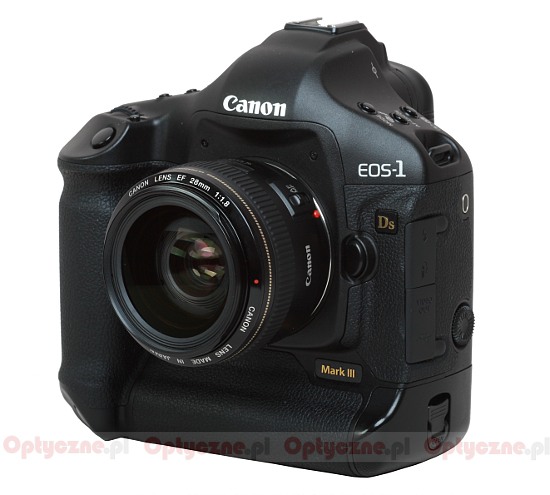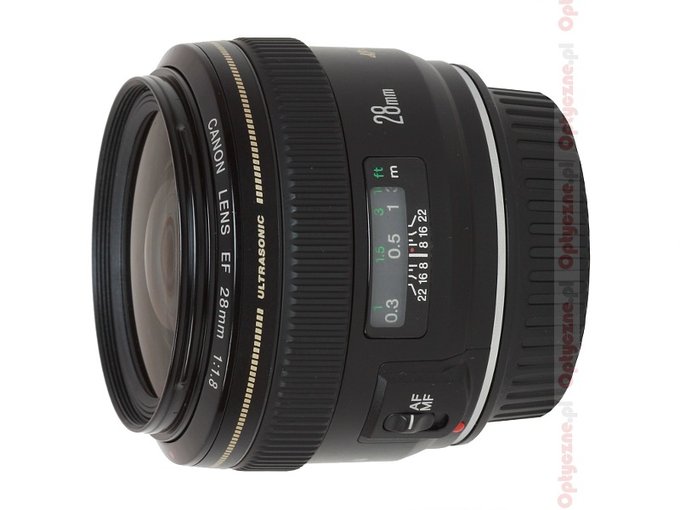Canon EF 28 mm f/1.8 USM
1. Introduction
One of the oldest lenses in the Canon’s current line-up is an EF 28 mm f/1.8 USM model, as it was launched on the market in September 1995. Why the company doesn’t see any need to introduce its successor? It would be, after all, a lens with very interesting parameters, an excellent partner for a full frame camera and that with an APS-C sensor as well. On the first of these it would be a wide angle device with an angle of view of 75.4 degrees and on the second camera - a wider standard lens, with an angle of 51.8 degrees.
Perhaps the lack of competition is the reason why we still don’t see any successor on the horizon. In this category only Sigma offers two lenses with similar parameters. A Sigma 30 mm f/1.4 EX DC HSM is not a full frame instrument, though, and a full frame Sigma 28 mm f/1.8 EX DG Aspherical Macro doesn’t feature ultrasonics and optically it is not very well done. When it comes to other systems, Nikon has an AF 28 mm f/1.4 D model on offer but it is as old as the Canon and, like the full frame Sigma, it doesn’t feature an ultrasonic autofocus motor. Pentax might suggest another strong rival – we think here about a smc P-FA 31 mm f/1.8 model. Sony also offers a 28 mm focal length model but it is much slower, with an aperture of f/2.8.
Please Support UsIf you enjoy our reviews and articles, and you want us to continue our work please, support our website by donating through PayPal. The funds are going to be used for paying our editorial team, renting servers, and equipping our testing studio; only that way we will be able to continue providing you interesting content for free. |
- - - - - - - - - - - - - - - - - - - - - - - - - - - - - - - - - - - - - - - - - - - - - - - -
There might be only one reason after all - the simplest one- why there is no successor planned. Perhaps the Canon EF 28 mm f/1.8 USM, in spite of its advanced age, is still a lens which is optically very good and there’s simply no need to think about any imaginary younger version. We hope that our test will allow to check whether or not it is really the case – to find out, feel invited to read the following chapters.
We would like to thank the Foto-ivy shop which has provided the lens for testing purposes.
Information about our review method can be read in our article “How do we test lenses?"
 |







